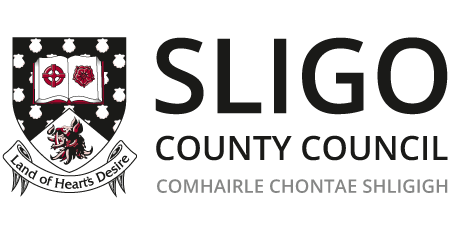Green Schools project at Rathcormac National School, Sligo

Blog 10 - Rathcormac National School

An Taisce, through their Green Schools programme, have been actively encouraging schools all over the country to imbue their pupils with an understanding of and caring attitude towards the environment.
At Rathcormac National School in Sligo, pupils from a range of classes took part in activities which focussed on marine life and the importance of protecting different species which inhabit the coastal areas near the school.
In Junior Infants, the pupils looked at how plastic pollution hurts sea life and they discussed how a clean sea is good for everyone and everything.
The pupils carried out a range of age-appropriate experiments, including looking at how a bird’s feathers might be impacted by coming into contact with oil. They did this by looking at the feathers in a solution which contained only water by comparison with another solution which contained a water and oil mixture. This gave the pupils a clear idea of how difficult it would be for birds along the coast to fly once their feathers came into contact with oil.
Global Citizenship Marine Environment is the eighth theme of the Green-Schools programme. As with the previous themes, you will see that this theme cross-cuts and integrates with previous themes in many ways.
Some of the older children in 4th Class carried out a separate study which focussed on global warming. This comes about when carbon dioxide gets trapped in the atmosphere and this causes the temperature on the Earth to rise. As a result, warm places get warmer and wet places get wetter and glaciers melt. All of this results in water levels rising, which leads to flooding. Again, another insightful and relevant study by a group of children who could be directly become impacted by flooding events due to the location in which they live being along the Sligo coastline.
An Taisce – through Green Schools – works tirelessly with schools to improve the understanding of children about the complex nature of environmental change. They do this in a way which seeks to inform rather than alarm, and is a very important step in raising awareness in schools for pupils and their teachers.
Below we outline some of the information on the marine environment programme, so if you or your school requires further help in rolling out an environmental campaign to highlight any of these or other environmental issues, contact your local Green Schools representative or contact an Taisce.
Why Global Citizenship – Marine Environment?
As with the other Global Citizenships themes, Global Citizenship – Marine Environment will enable you to discover how your work on the Green-Schools programme has, positively, influenced people and their local environments worldwide while focusing your work on our oceans and seas.
The theme of Global Citizenship – Marine Environment will focus on the 70% of the planet that is covered by oceans. Your school does not need to be a coastal school to take part and raise awareness of the importance the Marine Environment plays in all our lives.
This time we are asking schools to look at Global Citizenship in relation to the Marine Environment. Did you know that Ireland’s seabed territory is one of the largest in Europe and more than 10 times Ireland’s land mass? That’s a lot of ocean to protect, and that is exactly what we all need to do. As you worked on the theme of Biodiversity before you will understand the importance of eco-system; our oceans and seas are another very important ecosystem. That is why we have decided to focus the new Global Citizenship theme on the Marine Environment. We will be asking you to identify the threats to the Marine Environment with a particular focus on Marine Litter.
Why is the Marine Environment so important and why should we conserve it?
When we speak about the marine environment it encompasses a vast variety of coastal and marine ecosystems which create very diverse habitats with many different plant and animal species adapted to live in these habitats. A few examples:
- Estuaries – a fantastic habitat for our wintering wading birds as they provide a huge source of food for them
- Lagoons – a very special habitat that supports species adapted to live in semi saline/brackish waters
- Coral reefs – supports a huge variety of biodiversity through offering food shelter and highly protected breeding grounds
- Mangroves – highly specialized salt tolerant trees that are adapted to live in harsh coastal conditions in tropical and subtropical areas.
- Intertidal zones – also known as foreshore or seashore is an area that is above water at low tide and under water at high tide. This area can include many different types of habitats, with many types of animals, such as starfish, sea urchins, and numerous species of coral. This habitat creates extremely harsh conditions and supports a variety of organisms adapted to live in this harsh climate.
- Open ocean – Where we can see our most beautiful species of whales, dolphins and sharks
- Deep sea bed – Very specialized species live in and on the deep sea bed, most feed on detritus that sinks to the seabed and these species are thus extremely important to the cycling of nutrients in our oceans, just like the animals that live in your compost bin!
- Apart from providing us with a basic intrinsic value the marine and coastal ecosystems give us products such as seafood, sand, oil, they help to maintain ecological diversity, regulate climate change and off course it provides us with fantastic places to relax in; who doesn’t enjoy building a few sand castles, walking their dog, swimming or even watching the beautiful coastal wildlife.
- The oceans and seas are generally accepted to be a global common, in other words we are all equally responsible for its health as we are all equally reliant on the services it provides. Coastal and marine ecosystems are amongst the most productive ecosystems in the world. Apart from the well-known economic benefits through fisheries, the global shipping industry and mining (such as off-shore drilling for oil for example) we also heavily depend on these ecosystems for our growing tourism industry and our general well- being.
Threats to the Marine Environment
- Marine Litter and Pollution
- Overfishing
- Climate Change
- Invasive Species
- Commercial Shipping
- Offshore Mining
Marine Litter
Marine litter is any man-made material that has ended up in the marine environment after being lost or discarded at sea or on land. Approximately 10 million tonnes of litter end up in the world’s oceans and seas each year. The term “marine litter” covers a range of materials which have been deliberately discarded, or accidentally lost on shore or at sea, and it includes materials that are carried out to sea from land, rivers, drainage and sewerage systems, or the wind” (European Commission, 2013)
What we find on our beaches is not the full extent of the marine litter load in the environment. It is estimated that 70% of marine litter is on the seabed and 15% is what we find on our shores (OSPAR, 1995). Marine litter consists of a wide range of materials, including plastic, metal, wood, rubber, glass and paper. However, it is dominated by plastic which accounts for 80% of the items found on our beaches.

